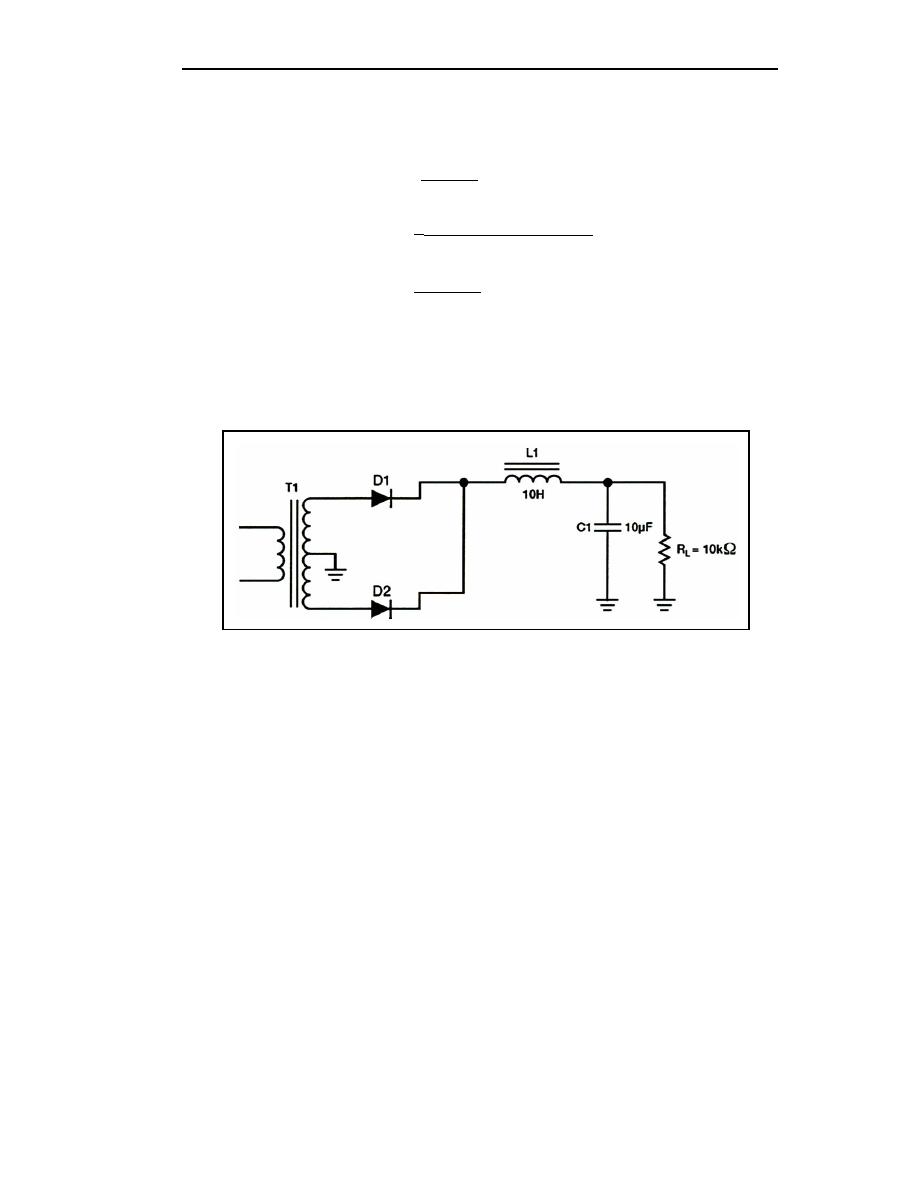
TC 9-62
half-wave rectifier. For a 60-Hz input, the ripple will be 120 Hz. The XC of C1 and the XL
of L1 is calculated as follows:
1
XC =
2 πfC
1
XC =
-
(2) (3.14) (60) (10)10 6 )
(1) (106 )
X C=
7536
X C = 132.5ohms
XL = 2πf L
X L = (2) (3.14) (120) (10)
X L = 7.5 kilohms
Figure 4-27. Full-wave Rectifier With an LC Choke-input Filter
4-63. When the XC of a filter capacitor is decreased, it provides less opposition to the
flow of AC. The greater the AC flow through the capacitor, the lower the flow through the
load. Conversely, the larger the XL of the choke, the greater the amount of AC ripple
developed across the choke. Consequently, less ripple is developed across the load and
better filtering is obtained.
4-64. The filter capacitors are subject to open circuits, short circuits, and excessive
leakage. The series inductor is subject to open windings and occasionally, shorted turns or
a short circuit to the core.
4-65. The filter capacitor in the LC choke-input filter circuit is not subject to extreme
voltage surges because of the protection offered by the inductor. However, the capacitor
can become open, leaky, or shorted.
4-66. Shorted turns in the choke may reduce the value of inductance below the critical
value. This will result in excessive peak-rectifier current, accompanied by an abnormally
high output voltage, excessive ripple amplitude, and poor voltage regulation.
4-67. A choke winding that is open or a choke winding which is shorted to the core will
result in a no-output condition. A choke winding, which is shorted to the core, may cause
overheating of the rectifier element(s) and blown fuses.
4-24
TC 9-62
23 June 2005



 Previous Page
Previous Page
